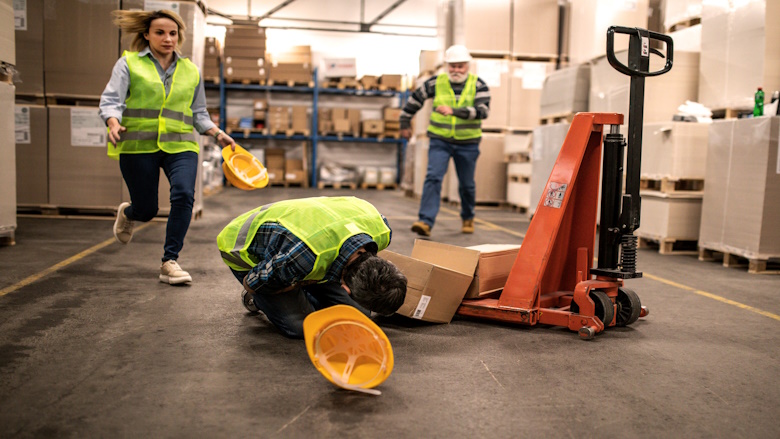
Innovations in workplace first aid

Part of your job as a health and safety expert is to make sure employees in your workplace have access to the first aid supplies they need in the event of an emergency, as well as ensuring that everyone knows what to do in the face of the unexpected.
Luckily for you, emerging technologies are making your job easier than ever. Today, workplace safety is taken seriously, and developments are constantly on the horizon that make it a breeze to stay safe at work.
Americans prioritize convenience, and first aid is no exception – have you seen the pre-fabricated first aid kits on the market today? They’re elaborate, well-organized, and they take all the guesswork out of preparing for emergencies.
Traditional challenges in workplace safety
That’s not to say that your job is without its challenges, because you know that’s not true. Convincing everyone in your workplace to take safety protocols seriously, stay up-to-date on any necessary training and drills, and follow procedures exactly as written is no small task.
One of the major challenges in workplace safety is that people tend to think they’re invincible at work. This means they’re less likely to take the time to properly prepare for an emergency. If the average employee were to slip and fall in the breakroom, do they know where to find the first aid kit?
In low-risk settings like offices, it can be easy to forget that accidents can happen anywhere. When people are unprepared for emergencies, studies show that the outcomes of those emergencies tend to be worse.
Budgetary concerns can also be a challenge — if businesses don’t invest money into first aid and emergency preparedness training, it sets the workplace up for failure when bad things happen.
Integrating technology for safer workplaces
Technological advancements have changed the landscape of workplace safety. It’s now as easy as clicking a button to get first aid training since many programs are available online. There are apps — such as Heart of the Nation – that can help users locate first aid resources, such as the nearest AED or hospital.
Artificial intelligence can be used to predict scenarios and properly prepare for them without putting anyone at risk in the process. In the same vein, virtual reality programs like the ones offered by First Aid VR and Canberra First Aid make it easy for workers to practice their skills in simulated environments.
For higher-risk workplaces, like construction sites and mines, wearable technology can keep workers safe by monitoring their vital signs to prevent a health emergency. These devices also have the ability to detect dangerous environmental conditions that pose a risk to crews.
The use of robots and machinery in workplaces that require heavy lifting is becoming more common, saving workers the strain on their bodies and preventing serious injuries. Drones offer a unique way to scope out a site for dangerous conditions before workers move into place.
Enhancing worker safety with innovative first aid tools
There’s no debate that technology has made workers safer. Consider AEDs (automatic external defibrillators). Even without receiving extensive training, these advanced machines can be used by anyone to revive a victim in sudden cardiac arrest, and the device does most of the work on its own.
Sprays and powders that can help minimize bleeding are now available and can be stocked in workplace first aid kits, making it possible to reduce the severity of cuts that might happen at work.
These innovative tools provide peace of mind for anyone stocking a first aid kit at work because they offer solutions to problems that have not yet occurred.
These advancements make workplaces safer for the employees who are trying to do their jobs. Workers need access to the right tools and training in order to stay safe on the job, and modern resources have opened the door for better accessibility.
The future of workplace first aid: trends and predictions
There is still plenty of room for advancement in first aid, especially for the diverse kinds of accidents that can happen across different industries. As more technologies emerge, the average workplace will get safer and become better prepared with every step toward the future.
Going forward, you can expect to see some exciting changes:
Drones delivering supplies
Even for remote workplaces with well-stocked first aid kits, sometimes accidents happen that require more supplies than what you have on hand. Drones have the ability to cross hazardous environments to deliver items quickly that could be the difference between life and death.
Mental health first aid
In the future, there is a need for a greater focus on mental health first aid in the workplace. It’s critical to make sure someone knows how to properly respond to a mental health crisis if one occurs at work.
Diversity, equity and inclusion concerns
Specific care may need to be taken for disabled employees or workers who practice certain religions that limit the type of care they can receive. As these sensitivities are addressed, the workplace will become safer for everyone.
Conclusion
Not only is staying up-to-date on first aid trends prudent for any health and safety professional, it’s also vital to ensure you have the resources to keep your workplace safe. As long as you stay on top of changes to first aid standards and embrace the use of innovative new tools, any emergencies that come your way will be met with a well-prepared team.
